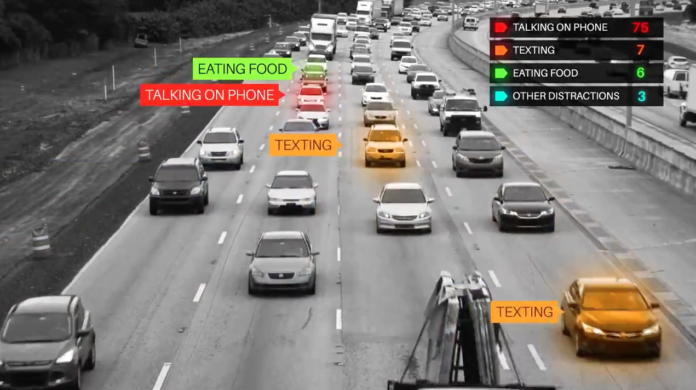If someone threw a 3,000 lb ball at you, would you try to catch it? What about if you were walking down the street and a 4,000 lb piano fell out an apartment window, would you walk under it? I’m guessing NO. Of course you wouldn’t. Why? You could get hurt. Duh. Right? Well every time you get behind the wheel of your vehicle and drive distracted, you put yourself in an equally unsafe situation. You either become the ball/piano (i.e. vehicle) hurling toward someone else or you become the person that the ball/piano (i.e. vehicle someone else is driving) is being hurled at.
Have you ever done any of these things while driving? How many can you check?

Checking ANY of the above boxes means you’ve driven distracted. You were the hurling ball/piano. And I guarantee you’ve been in the path of a distracted driver in another vehicle.
What is Distracted Driving?
Simply put, it’s any visual or auditory activity that diverts your attention away from the primary task of driving.
Three Types
- Manual – Distractions involving moving your hands from the wheel (changing the stereo, grabbing for your phone, eating, putting on makeup/shaving, etc.)
- Visual – Focusing your eyes away from the road (checking out the hottie in the next car, reading billboards, looking in the rearview mirror at the kids, etc.)
- Cognitive – Your mind wandering while driving (focused on work/home, having a conversation with yourself, someone on the phone or a passenger, etc.)
Which of these three types do you think applies to texting or using your cell phone without being hands-free? If you guessed all three, you’d be right!
This video absolutely will give you chills. Reggie Shaw was distracted and killed two people. Don’t be Reggie.
Which is Worse? Drunk Driving or Cell Phone Use?
According to the University of Utah, people are as impaired when they drive and talk on a cell phone as they are when they drive intoxicated at the legal blood alcohol level. YIKES! And USDOT states that text messaging increases the risk of crashes or near crashes by 23 times!
The Most Startling Distracted Driving Statistics for 2020
CarInsurance.Net states the following statistics:
- 21% of teen drivers involved in a car accident were distracted by cell phones.
- A teen driver with one additional passenger is twice as likely to be involved in a fatal car accident.
- Texting or reading a text takes a driver’s eyes off the road for at least 5 seconds.
- In some states, a distracted driving citation can raise insurance rates from $87 to $762.
- According to the NHTSA, 660,000 drivers use electronic devices while driving.
- Men are 4 times more likely to drink and drive, while women are more likely to text and drive.
- Reaching for an object increases the chances of a car crash by 8 times according to the more alarming distracted driving statistics.
- Parents with young children are more likely to be distracted behind the wheel than adults without kids in their car.
- Once a driver has been distracted, it takes only 3 seconds for a car crash to occur.
- In the United States, about 9 people are killed every day due to car crashes involving a distracted driver.
The organization, End Distracted Driving (endDD.org), provides some statistics on distracted driving that are worth reading. Share them with your teen drivers as well.
Zebra.com put together a very interesting study on distracted driving and compiled a list of texting while driving and cell phone requirements by state. Check it out as you head out on vacation this summer.
According to Magleby’s Safety Manual, for those that drive a company vehicle:
- Vehicles will be operated within the requirements of all traffic rules and laws.
- Handheld wireless communication devices shall not be used for text messaging or electronic mail communication while operating the vehicle (UT41-6a-1716).
- Texting is never allowed while operating the vehicle.
- Careless driving is prohibited. Careless driving includes using an electronic communication device (unless using a hands-free feature), searching for an item in the vehicle or attending to personal hygiene or grooming while operating the vehicle (UT 41-6a-1715).











